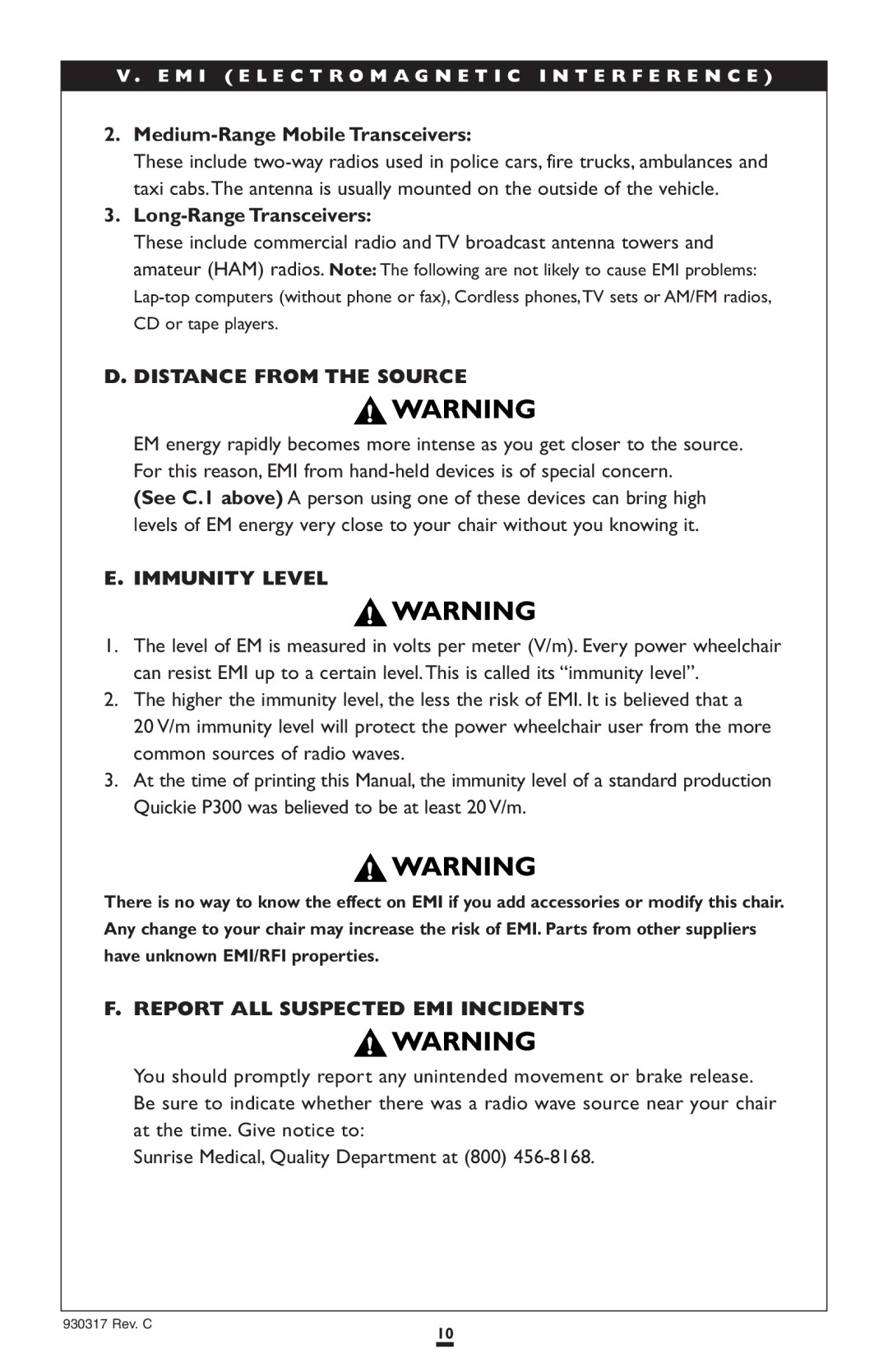
V . E M I ( E L E C T R O M A G N E T I C I N T E R F E R E N C E )
2.Medium-Range Mobile Transceivers:
These include
3.Long-Range Transceivers:
These include commercial radio and TV broadcast antenna towers and amateur (HAM) radios. Note: The following are not likely to cause EMI problems:
D. DISTANCE FROM THE SOURCE
EM energy rapidly becomes more intense as you get closer to the source. For this reason, EMI from
(See C.1 above) A person using one of these devices can bring high levels of EM energy very close to your chair without you knowing it.
E. IMMUNITY LEVEL
1.The level of EM is measured in volts per meter (V/m). Every power wheelchair can resist EMI up to a certain level.This is called its “immunity level”.
2.The higher the immunity level, the less the risk of EMI. It is believed that a
20 V/m immunity level will protect the power wheelchair user from the more common sources of radio waves.
3.At the time of printing this Manual, the immunity level of a standard production Quickie P300 was believed to be at least 20 V/m.
There is no way to know the effect on EMI if you add accessories or modify this chair. Any change to your chair may increase the risk of EMI. Parts from other suppliers have unknown EMI/RFI properties.
F.REPORT ALL SUSPECTED EMI INCIDENTS
You should promptly report any unintended movement or brake release. Be sure to indicate whether there was a radio wave source near your chair at the time. Give notice to:
Sunrise Medical, Quality Department at (800)
930317 Rev. C
10
